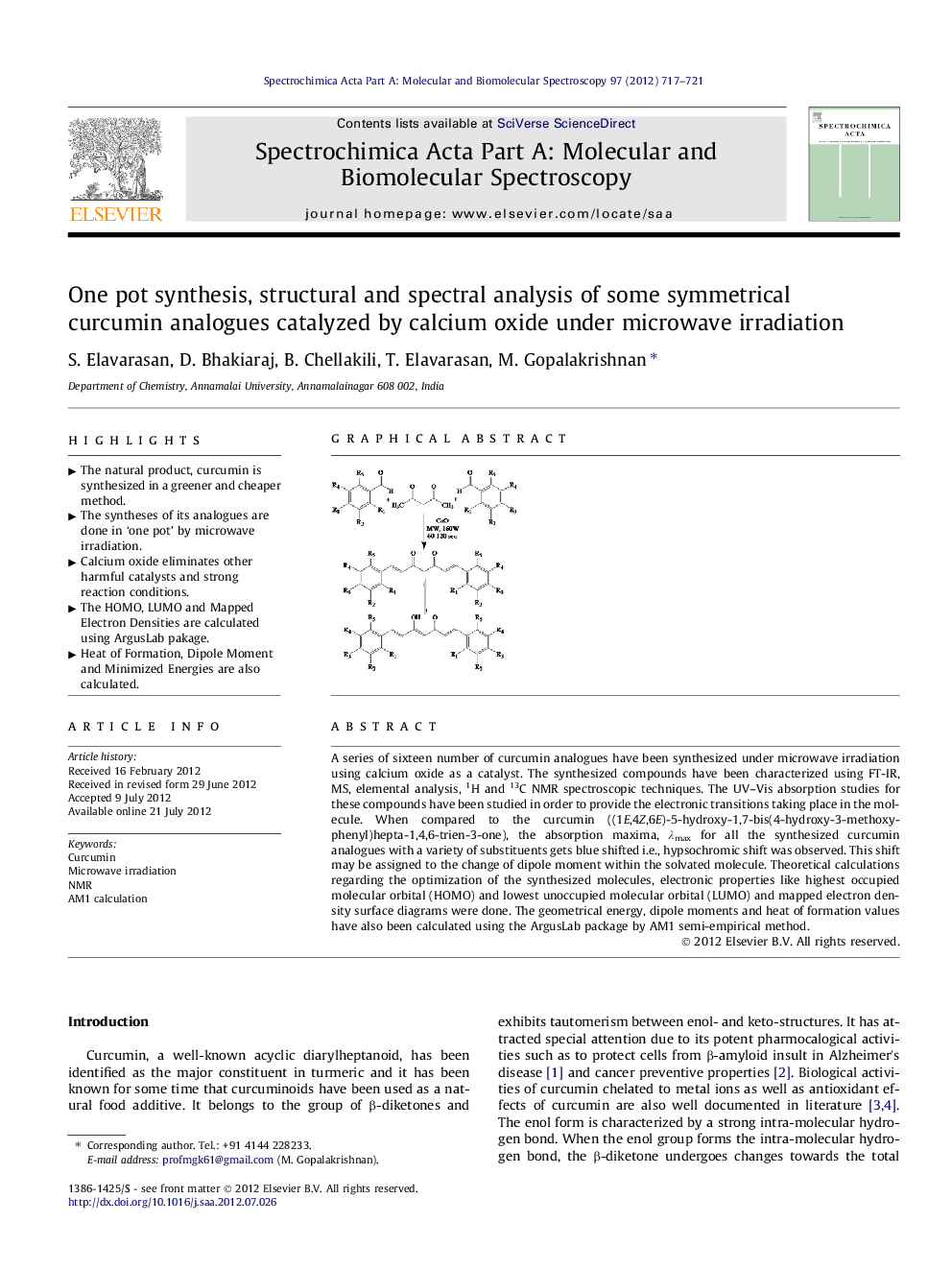| Article ID | Journal | Published Year | Pages | File Type |
|---|---|---|---|---|
| 1232368 | Spectrochimica Acta Part A: Molecular and Biomolecular Spectroscopy | 2012 | 5 Pages |
A series of sixteen number of curcumin analogues have been synthesized under microwave irradiation using calcium oxide as a catalyst. The synthesized compounds have been characterized using FT-IR, MS, elemental analysis, 1H and 13C NMR spectroscopic techniques. The UV–Vis absorption studies for these compounds have been studied in order to provide the electronic transitions taking place in the molecule. When compared to the curcumin ((1E,4Z,6E)-5-hydroxy-1,7-bis(4-hydroxy-3-methoxyphenyl)hepta-1,4,6-trien-3-one), the absorption maxima, λmax for all the synthesized curcumin analogues with a variety of substituents gets blue shifted i.e., hypsochromic shift was observed. This shift may be assigned to the change of dipole moment within the solvated molecule. Theoretical calculations regarding the optimization of the synthesized molecules, electronic properties like highest occupied molecular orbital (HOMO) and lowest unoccupied molecular orbital (LUMO) and mapped electron density surface diagrams were done. The geometrical energy, dipole moments and heat of formation values have also been calculated using the ArgusLab package by AM1 semi-empirical method.
Graphical abstractFigure optionsDownload full-size imageDownload as PowerPoint slideHighlights► The natural product, curcumin is synthesized in a greener and cheaper method. ► The syntheses of its analogues are done in ‘one pot’ by microwave irradiation. ►Calcium oxide eliminates other harmful catalysts and strong reaction conditions.► The HOMO, LUMO and Mapped Electron Densities are calculated using ArgusLab pakage. ► Heat of Formation, Dipole Moment and Minimized Energies are also calculated.
